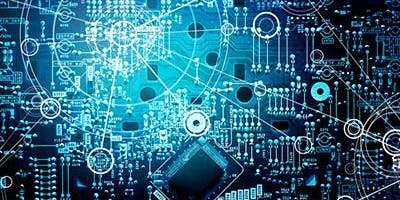This talk will give an overview of NVIDIA efforts in the development of perception algorithms for self-driving cars and highlight the key challenges that had to be tackled in the process.
------------------------------------------------------------------------------------
SPEAKERS
Dr Adam Henryk Grzywaczewski, Deep learning solution architect, NVIDIA
------------------------------------------------------------------------------------
AGENDA
18:00 - Tea, coffee, juice & biscuits
18:30 - Talk
19:30 - Networking, including food and wine
21:30 - Close
------------------------------------------------------------------------------------
SYNOPSIS
Most of us don’t think about it when we take the wheel, but the sheer variety of conditions and events we face on our daily drive is staggering.
To help manufacturers build self-driving cars able to handle these, NVIDIA is developing our own suite of perception algorithms. We built our AI for autonomous driving, with deep neural networks running simultaneously to handle the full range of real-world conditions - vehicles and pedestrians, lighting at different times of day, sleet, glare, black ice, you name it.
Implementing the right algorithms to power this AI requires a tremendous amount of research and development. One of the most daunting challenges is verifying the correctness of deep neural networks across all conditions. And it’s not enough to do it once: you have to do so again and again to meet rigorous safety requirements.
Carrying out this type of comprehensive training requires the deep neural networks to be able to run millions of real data miles without error. And that’s just to match human performance. Factor in a full 12-camera platform equipped with lidar and radar sensors and the entire dataset for training over these millions of miles amounts to hundreds of petabytes.
That’s an enormous amount just to ensure human-level capability. And to be truly safe, self-driving systems must do better than human drivers.
------------------------------------------------------------------------------------
SPEAKER BIOGRAPHY
Dr Adam Henryk Grzywaczewski is a deep learning solution architect at NVIDIA, where his primary responsibility is to support a wide range of customers in the delivery of their deep learning solutions. Adam is an applied research scientist specializing in machine learning with a background in deep learning and system architecture. Previously, he was responsible for building up the UK government’s machine learning capabilities while at Capgemini and worked in the Jaguar Land Rover Research Centre, where he was responsible for a variety of internal and external projects and contributed to the self-learning car portfolio.
------------------------------------------------------------------------------------
Will catering be provided?
We will be providing Sushi & Oriental Platters, with tea, coffee, water, wine, and juice.
BCS APSG is trialling video-streaming events. If you cannot attend the event in Central London please join the video streaming on Thursday 11 April 2019 at 6:30 pm:
https://bcs.cloud.panopto.eu/Panopto/Pages/Viewer.aspx?id=d1bee580-be1a-44be-9272-aa090115c613
After the event please leave your comment on Twitter of your experience: @bcs_apsg
For overseas delegates who wish to attend the event please note that BCS does not issue invitation letters.
------------------------------------------------------------------------------------
THIS EVENT IS BROUGHT TO YOU BY:
BCS Advanced Programming SG
Visit www.bcs.org/category/9813














